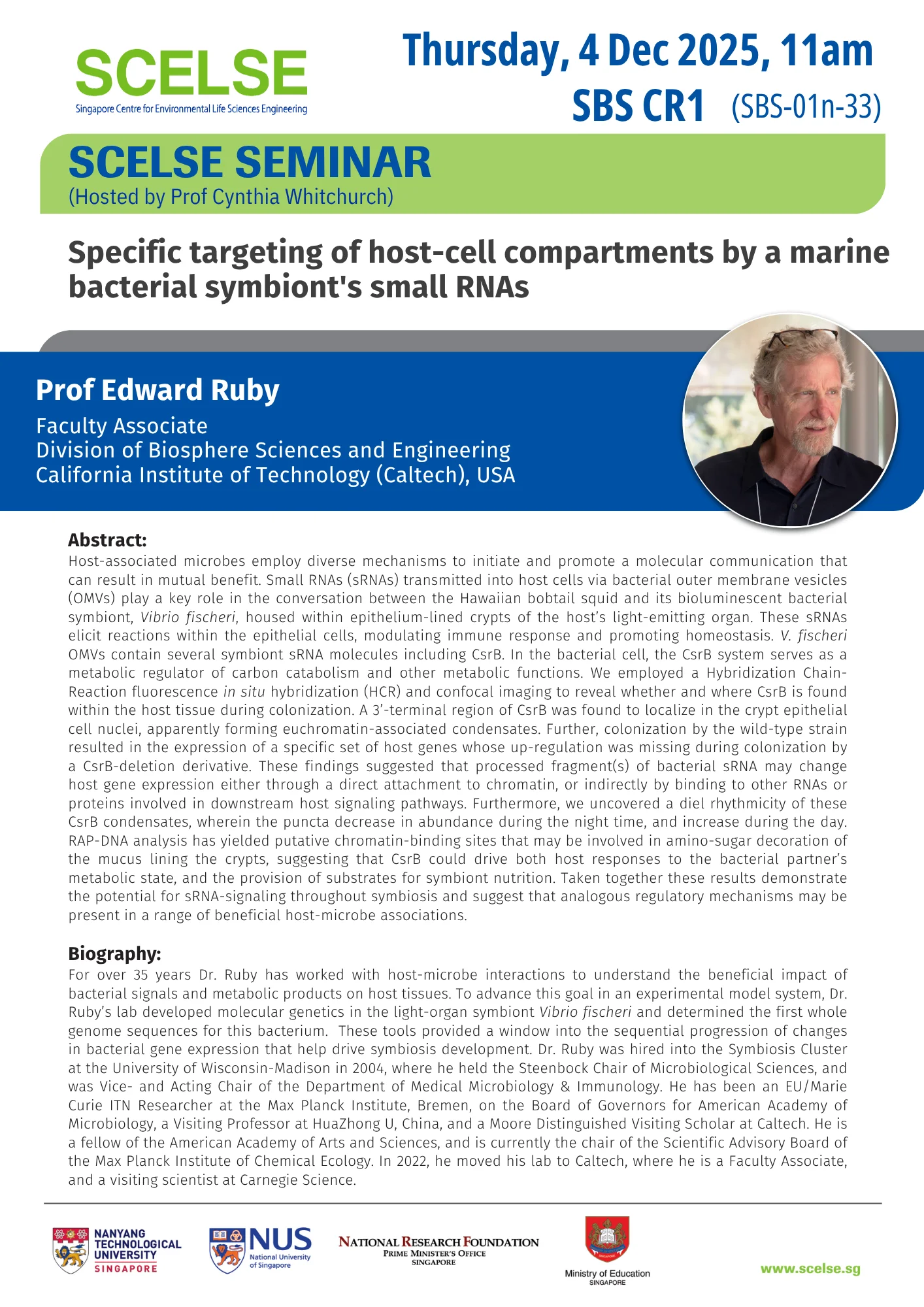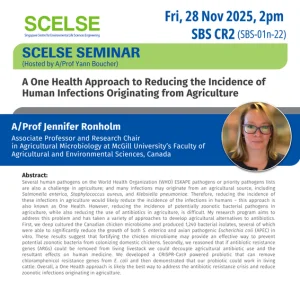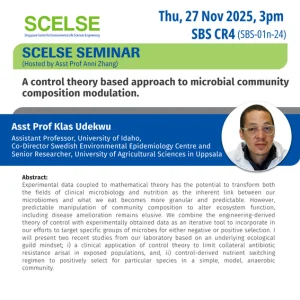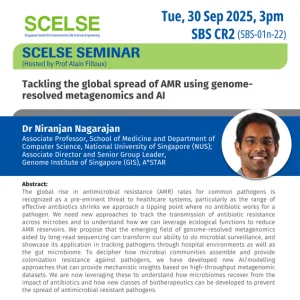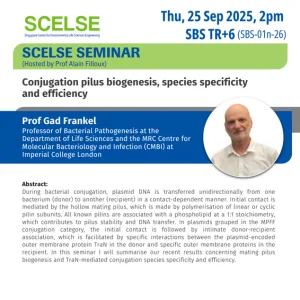Specific targeting of host-cell compartments by a marine bacterial symbiont's small RNAs
Date: Thursday, 4 Dec 2025
Time: 11am –12pm
Venue: SBS CR1 (SBS-01n-33)
Abstract:
Host-associated microbes employ diverse mechanisms to initiate and promote a molecular communication that can result in mutual benefit. Small RNAs (sRNAs) transmitted into host cells via bacterial outer membrane vesicles (OMVs) play a key role in the conversation between the Hawaiian bobtail squid and its bioluminescent bacterial symbiont, Vibrio fischeri, housed within epithelium-lined crypts of the host’s light-emitting organ. These sRNAs elicit reactions within the epithelial cells, modulating immune response and promoting homeostasis. V. fischeri OMVs contain several symbiont sRNA molecules including CsrB. In the bacterial cell, the CsrB system serves as a metabolic regulator of carbon catabolism and other metabolic functions. We employed a Hybridization Chain- Reaction fluorescence in situ hybridization (HCR) and confocal imaging to reveal whether and where CsrB is found within the host tissue during colonization. A 3’-terminal region of CsrB was found to localize in the crypt epithelial cell nuclei, apparently forming euchromatin-associated condensates. Further, colonization by the wild-type strain resulted in the expression of a specific set of host genes whose up-regulation was missing during colonization by a CsrB-deletion derivative. These findings suggested that processed fragment(s) of bacterial sRNA may change host gene expression either through a direct attachment to chromatin, or indirectly by binding to other RNAs or proteins involved in downstream host signaling pathways. Furthermore, we uncovered a diel rhythmicity of these CsrB condensates, wherein the puncta decrease in abundance during the night time, and increase during the day. RAP-DNA analysis has yielded putative chromatin-binding sites that may be involved in amino-sugar decoration of the mucus lining the crypts, suggesting that CsrB could drive both host responses to the bacterial partner’s metabolic state, and the provision of substrates for symbiont nutrition. Taken together these results demonstrate the potential for sRNA-signaling throughout symbiosis and suggest that analogous regulatory mechanisms may be present in a range of beneficial host-microbe associations.
Speaker:
Prof Edward Ruby
Faculty Associate
Division of Biosphere Sciences and Engineering
California Institute of Technology (Caltech), USA
Biography:
For over 35 years Dr. Ruby has worked with host-microbe interactions to understand the beneficial impact of bacterial signals and metabolic products on host tissues. To advance this goal in an experimental model system, Dr. Ruby’s lab developed molecular genetics in the light-organ symbiont Vibrio fischeri and determined the first whole genome sequences for this bacterium. These tools provided a window into the sequential progression of changes in bacterial gene expression that help drive symbiosis development. Dr. Ruby was hired into the Symbiosis Cluster at the University of Wisconsin-Madison in 2004, where he held the Steenbock Chair of Microbiological Sciences, and was Vice- and Acting Chair of the Department of Medical Microbiology & Immunology. He has been an EU/Marie Curie ITN Researcher at the Max Planck Institute, Bremen, on the Board of Governors for American Academy of Microbiology, a Visiting Professor at HuaZhong U, China, and a Moore Distinguished Visiting Scholar at Caltech. He is a fellow of the American Academy of Arts and Sciences, and is currently the chair of the Scientific Advisory Board of the Max Planck Institute of Chemical Ecology. In 2022, he moved his lab to Caltech, where he is a Faculty Associate, and a visiting scientist at Carnegie Science.
